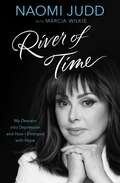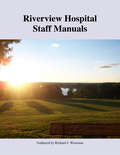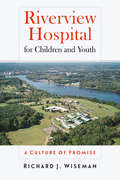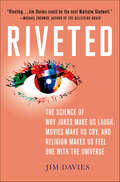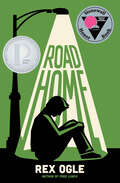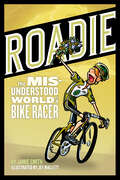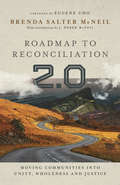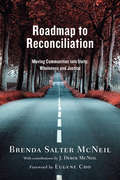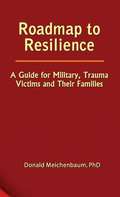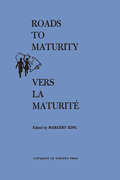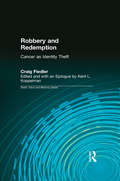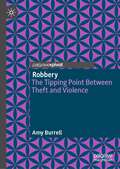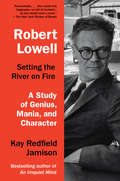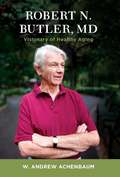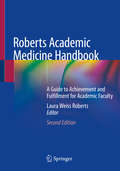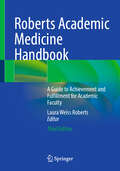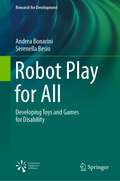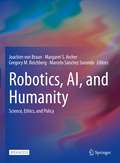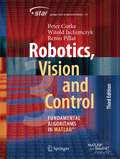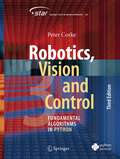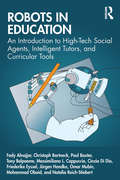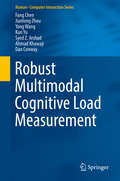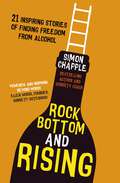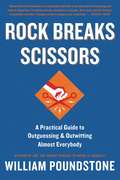- Table View
- List View
River of Time: My Descent into Depression and How I Emerged with Hope
by Marcia Wilkie Naomi JuddNaomi Judd's life as a country music superstar has been nonstop success. But offstage, she has battled incredible adversity. Struggling through a childhood of harsh family secrets, the death of a young sibling, and absent emotional support, Naomi found herself reluctantly married and an expectant mother at age seventeen. Four years later, she was a single mom of two, who survived being beaten and raped, and was abandoned without any financial support and nowhere to turn in Hollywood, CA. Naomi has always been a survivor: She put herself through nursing school to support her young daughters, then took a courageous chance by moving to Nashville to pursue their fantastic dream of careers in country music. Her leap of faith paid off, and Naomi and her daughter Wynonna became The Judds, soon ranking with country music's biggest stars, selling more than 20 million records and winning six Grammys. At the height of the singing duo's popularity, Naomi was given three years to live after being diagnosed with the previously incurable Hepatitis C. Miraculously, she overcame that too and was pronounced completely cured five years later. But Naomi was still to face her most desperate fight yet. After finishing a tour with Wynonna in 2011, she began a three-year battle with Severe Treatment Resistant Depression and anxiety. She suffered through frustrating and dangerous roller-coaster effects with antidepressants and other drugs, often terrifying therapies and, at her absolute lowest points, thoughts of suicide. But Naomi persevered once again. RIVER OF TIME is her poignant message of hope to anyone whose life has been scarred by trauma.
Riverview Hospital Staff Manuals
by Richard J. WisemanThree staff manuals and handbooks from the formative years of the Riverview Hospital for Children and Youth, a groundbreaking psychiatric hospital in Middletown, Connecticut. Includes the ABCD Program, BLEU Handbook, and Sunburst Handbook. These archival materials provide detail that illuminates the treatment philosophy and methods employed by the hospital staff during the hospital's formative years.This ebook is being published as a companion to Riverview Hospital for Children and Youth: A Culture of Promise, by Richard J. Wiseman.
Riverview Hospital for Children and Youth: A Culture of Promise (The Driftless Connecticut Series)
by Richard J. WisemanA personal history of the groundbreaking children's mental health facility
Riveted: The Science of Why Jokes Make Us Laugh, Movies Make Us Cry, and Religion Makes Us Feel One with the Universe
by Jim DaviesWhy do some things pass under the radar of our attention, but other things capture our interest? Why do some religions catch on and others fade away? What makes a story, a movie, or a book riveting? Why do some people keep watching the news even though it makes them anxious?The past 20 years have seen a remarkable flourishing of scientific research into exactly these kinds of questions. Professor Jim Davies' fascinating and highly accessible book, Riveted, reveals the evolutionary underpinnings of why we find things compelling, from art to religion and from sports to superstition. Compelling things fit our minds like keys in the ignition, turning us on and keeping us running, and yet we are often unaware of what makes these "keys" fit. What we like and don't like is almost always determined by subconscious forces, and when we try to consciously predict our own preferences we're often wrong. In one study of speed dating, people were asked what kinds of partners they found attractive. When the results came back, the participants' answers before the exercise had no correlation with who they actually found attractive in person! We are beginning to understand just how much the brain makes our decisions for us: we are rewarded with a rush of pleasure when we detect patterns, as the brain thinks we've discovered something significant; the mind urges us to linger on the news channel or rubberneck an accident in case it might pick up important survival information; it even pushes us to pick up People magazine in order to find out about changes in the social structure.Drawing on work from philosophy, anthropology, religious studies, psychology, economics, computer science, and biology, Davies offers a comprehensive explanation to show that in spite of the differences between the many things that we find compelling, they have similar effects on our minds and brains.
Road Home
by Rex OgleA Printz Award Honor Book A Stonewall Book Award Honor Book An Amazon Best Book of the Year A Chicago Public Library Best of the Best Book of the Year Horn Book Fanfare Best Books of the Year A Kirkus Reviews Best Book of the Year A School Library Journal Best Book of the Year This final, essential chapter in Rex Ogle’s memoir trilogy recounts being forced from his home and living on the streets after his father discovered he was gay. When Rex was outed the summer after he graduated high school, his father gave him a choice: he could stay at home, find a girlfriend, and attend church twice a week, or he could be gay—and leave. Rex left, driving toward the only other gay man he knew and a toxic relationship that would ultimately leave him homeless and desperate on the streets of New Orleans. Here, Rex tells the story of his coming out and his father’s rejection of his identity, navigating abuse and survival on the streets. Road Home is a devastating and incandescent reflection on Rex’s hunger—for food, for love, and for a place to call home—completing the trilogy of memoirs that began with the award-winning Free Lunch.
Roadie: The Misunderstood World of a Bike Racer
by Smith Jamie"As an avid cyclist and amateur bike racer I feel like I can relate to every word in this book. It was so good that I bought two extra copies to give to my cyclist friends[.]"Veteran race announcer and long-time cycling enthusiast Jamie Smith sets out to explain the sport he loves and the roadies who live for it. Every seemingly neurotic tendency is explained and celebrated with humorous illustrations from nationally syndicated cartoonist Jef Mallett.This book is perfect for: Anyone who has ever known a roadieAnyone who has considered becoming a roadieAnyone who has walked away from a bike race completely puzzledFinally, a book to explain those people who roll out for a ride dressed in technicolored Lycra at the crack of dawn on Saturday, and return at sundown with a glow of satisfaction and even stronger tan lines. Whether interested onlooker or cycling aficionado, readers will find themselves laughing out loud as they revel in the roadie&’s world.
Roadmap to Reconciliation 2.0: Moving Communities into Unity, Wholeness and Justice
by Brenda Salter McNeilWe can see the injustice and inequality in our lives and in the world.Roadmap to Reconciliation 2.0
Roadmap to Reconciliation: Moving Communities into Unity, Wholeness and Justice
by Eugene Cho Brenda Salter McNeil J. Derek McNeilMissio Alliance Essential Reading List of 2015 We can see the injustice and inequality in our lives and in the world. We are ready to rise up. But how, exactly, do we do this? How does one reconcile? What we need is a clear sense of direction. Based on her extensive consulting experience with churches, colleges and organizations, Rev. Dr. Brenda Salter McNeil has created a roadmap to show us the way. She guides us through the common topics of discussion and past the bumpy social terrain and political boundaries that will arise. In these pages she voices her call to all believers: "It's time for the followers of Jesus to embark on the prophetic journey that leads to reconciliation and transformation around the world. Many of us may already be aware of the need for reconciliation in our own backyards. . . . We cannot ignore the plight of the people around us and as globalization continues its relentless march onward, we cannot turn a blind eye to the world at large either. We have to face the realities here at home and we must also embrace the stories of people all around the world." Each chapter lays out the next step in the journey. With reflection questions and exercises at the end of each chapter, it's ideal to read together with your church or organization. If you are ready to take the next step into unity, wholeness and justice, then this is the book for you.
Roadmap to Resilience: A Guide for Military, Trauma Victims and their Families
by Donald MeichenbaumIn 'Roadmap to Resilience', Dr. Meichenbaum discusses the differences between those who recover from trauma through resilience and those who must go through PTSD, for both military and civilian populations.
Roads to Maturity/Vers La Maturité: Proceedings of the Second Canadian Conference on Children/Déliberations de la second Conférence Canadienne de l'Enfance Montréal, October 31-November 4, 1965
by Margery KingThis volume contains the proceedings of the second Canadian Conference on Children which was held in Montreal in the autumn of 1965. It includes four papers given by Dr. Alva Myrdal, Dr. Alan Ross, Dr. M.S. Rabinovitch and Dr. C.E. Hendry, all well known for their attention to the problems of children growing up in the present world and concerned here to draw attention to those they see in Canada and elsewhere. A running commentary is supplied by Dr. Alan Thomas on the less formal side of the conference—the discussions that took place in groups after the speeches. The four papers and the commentary are printed in both English and French. Reverend Roger Guindon O.M.I. of the University of Ottawa provides the closing address, presented in a style which can be seen as an interesting new approach to the Canadian problem of bilingualism.
Robbery and Redemption: Cancer as Identity Theft (Death, Value and Meaning Series)
by Craig Fiedler Kent L KoppelmanFirst Published in 2017. This volume is a totally candid account about the facts and feelings surrounding the diagnosis of and battle against lung cancer—a battle the author waged with every ounce of his being. It has an enlightening quality because he shares how he transformed his previous knowledge of family dynamics, coping strategies, and empowerment into wisdom. He shares his journey of taking the knowledge from the Before Cancer phase of his life, “and like an alchemist, converting one raw material—his life and his diagnosis and battle—into an element quite unlike the original. Robbery and Redemption: Cancer as Identity Theft is chock-full of wisdom that has been learned the old fashioned, visceral way—from lived experience and keen reflection. This personal, upfront, “rubber-hit-the-road” treatise is a gift from the author to each reader. It is his wise interpretation of his own experiences of integrating values, problem solving, and coping strategies.
Robbery: The Tipping Point Between Theft and Violence
by Amy BurrellThis book brings together research on personal robbery from psychology, criminology, group dynamics, and youth justice, to provide a comprehensive resource on this crime type. Although robbery is a pressing issue affecting a very high volume of people, it has been under-researched in recent years. This book explores the motivations of offenders, methods of committing personal robbery and the group dynamics involved. The author discusses behavioural crime linkage as a method to help police forces identify serial offences, as well as how profiling has been used in robbery cases. The author concludes by summarising the policing tactics used to prevent and detect robbery, to show how understanding robbery can help in creating workable initiatives around this crime type.
Robert Lowell, Setting the River on Fire: A Study of Genius, Mania, and Character
by Kay Redfield JamisonIn this magisterial study of the relationship between illness and art, the best-selling author of An Unquiet Mind, Kay Redfield Jamison, brings an entirely fresh understanding to the work and life of Robert Lowell (1917-1977), whose intense, complex, and personal verse left a lasting mark on the English language and changed the public discourse about private matters.In his Pulitzer Prize-winning poetry, Robert Lowell put his manic-depressive illness (now known as bipolar disorder) into the public domain, creating a language for madness that was new and arresting. As Dr. Jamison brings her expertise in mood disorders to bear on Lowell’s story, she illuminates not only the relationships among mania, depression, and creativity but also the details of Lowell’s treatment and how illness and treatment influenced the great work that he produced (and often became its subject). Lowell’s New England roots, early breakdowns, marriages to three eminent writers, friendships with other poets such as Elizabeth Bishop, his many hospitalizations, his vivid presence as both a teacher and a maker of poems—Jamison gives us the poet’s life through a lens that focuses our understanding of his intense discipline, courage, and commitment to his art. Jamison had unprecedented access to Lowell’s medical records, as well as to previously unpublished drafts and fragments of poems, and she is the first biographer to have spoken with his daughter, Harriet Lowell. With this new material and a psychologist’s deep insight, Jamison delivers a bold, sympathetic account of a poet who was—both despite and because of mental illness—a passionate, original observer of the human condition.
Robert N. Butler, MD: Visionary of Healthy Aging
by W. Andrew AchenbaumRobert Neil Butler (1927–2010) was a scholar, psychiatrist, and Pulitzer Prize–winning author who revolutionized the way the world thinks about aging and the elderly. One of the first psychiatrists to engage with older men and women outside of institutional settings, Butler coined the term "ageism" to draw attention to discrimination against older adults and spent a lifetime working to improve their status, medical treatment, and care.Early in his career, Butler seized on the positive features of late-life development—aspects he documented in his pathbreaking research on "healthy aging" at the National Institutes of Health and in private practice. He set the nation's age-based health care agenda and research priorities as founding director of the National Institute on Aging and by creating the first interprofessional, interdisciplinary department of geriatrics at New York City's Mount Sinai Hospital. In the final two decades of his career, Butler created a global alliance of scientists, educators, practitioners, politicians, journalists, and advocates through the International Longevity Center. A scholar who knew Butler personally and professionally, W. Andrew Achenbaum follows this pioneer's significant contributions to the concept of healthy aging and the notion that aging is not synonymous with physical and mental decline. Emphasizing the progressive aspects of Butler's approach and insight, Achenbaum affirms the ongoing relevance of his work to gerontology, geriatrics, medicine, social work, and related fields.
Roberts Academic Medicine Handbook: A Guide to Achievement and Fulfillment for Academic Faculty
by Laura Weiss RobertsThis authoritative, updated and expanded title serves as the gold-standard resource to assist physicians, clinicians, and scientists in developing effective and satisfactory careers in academic medicine. Covering such critical topics as finding one's path in academic medicine, getting established at an institution, approaching work with colleagues, writing and reviewing manuscripts, conducting empirical research, developing administrative skills, advancing one's academic career, and balancing one's professional and personal life, each chapter includes valuable career pointers and best practice strategies, as well as pithy words to the wise and questions to ask a mentor or colleague. Building on the success of the first edition, the Roberts Academic Medicine Handbook: A Guide to Achievement and Fulfillment for Academic Faculty, 2nd Edition includes new case examples and updated references, as well as many new and timely chapters on topics such as public speaking, working with the media, working with community-based organizations, philanthropy, and finding meaning and a sense of belonging in one's work. The Roberts Academic Medicine Handbook, 2nd Edition is an indispensable resource for all professionals entering or already established in academic medicine who wish to achieve a fulfilling career.
Roberts Academic Medicine Handbook: A Guide to Achievement and Fulfillment for Academic Faculty
by Laura Weiss RobertsThis third edition has been fully updated and expanded, including seventy-three chapters, a dozen of which are new, to support the professional development and success of faculty in the field of academic medicine. Previous editions of Roberts Academic Medical Handbook are regarded as gold-standard resources that guide health professionals, including clinicians, scientists, and learners, in navigating their careers in academic medicine. Section One covers the critical topic of approaching the path of academic medicine, with emphasis on how to build your foundation for a successful career. This section includes two new chapters on contemporary issues faced by new professionals: how to avoid imposter syndrome and how to stay focused. Section Two builds upon this foundation and includes three new practical chapters that will relay to the reader how to craft an effective personal statement, teach in busy clinical settings, and approach board certification and recertification. Section Three examines best practices for working well and effectively with colleagues and includes a new chapter on how to be one&’s best self-advocate in academic settings. Following this, Section Four offers constructive guidance on key competencies for academic faculty, such as preparing book proposals, writing manuscripts, and reviewing manuscripts. Section Five discusses how to conduct empirical studies and includes a new chapter on how to approach medical education research. Section Six includes chapters on developing administrative skills, including best practices in faculty searches and how to work collaboratively with human resources. The book closes with a final section that discusses advancing your career and work-life balance, featuring three new chapters. Roberts Academic Medicine Handbook, 3rd Edition will be an indispensable resource for all professionals entering the field or mentoring others who are seeking fulfillment through a career in academic medicine.
Robot Play for All: Developing Toys and Games for Disability (Research for Development)
by Andrea Bonarini Serenella BesioThis book presents a comprehensive guide to the design of playing robots and the related play experiences. Play is a natural activity for building and improving abilities, and it reveals important particularly for persons with disabilities. Many social, physical and cultural factors may hinder children with disabilities from fully enjoying play as their peers. Autonomous robots with specific characteristics can enhance the ludic experience, having implications for the character of the play and presenting opportunities related to autonomy and physical movement, the very nature of robots. Their introduction into play thus provides everybody, and in particular persons with disabilities, new possibilities for developing abilities, improving general status, participating in social contexts, as well as supporting professionals in monitoring progress. This book presents a framework for the design of playful activities with robots, developed over 20 years’ experience at AIRLab - POLIMI. Part 1 introduces the play concepts and characteristics, and research results about play of children with different kinds of impairments. Part 2 focuses on implementing robots able to play. The design of playful activities is discussed, as well as the necessary characteristics for them to be useful in both general play and activities involving disability-related limitations. In Part 3, the defined framework is used to analyze possibilities involving robots available on the toy market, robots developed at research labs, and robots to be developed in the next future. The aim of the book is to give developers, caregivers, and users a set of methodological tools for selecting, exploring, and designing inclusive play activities where robots play a central role.
Robotics, AI, and Humanity: Science, Ethics, and Policy
by Margaret S. Archer Gregory M. Reichberg Joachim Von Braun Marcelo Sánchez SorondoThis open access book examines recent advances in how artificial intelligence (AI) and robotics have elicited widespread debate over their benefits and drawbacks for humanity. The emergent technologies have for instance implications within medicine and health care, employment, transport, manufacturing, agriculture, and armed conflict. While there has been considerable attention devoted to robotics/AI applications in each of these domains, a fuller picture of their connections and the possible consequences for our shared humanity seems needed. This volume covers multidisciplinary research, examines current research frontiers in AI/robotics and likely impacts on societal well-being, human – robot relationships, as well as the opportunities and risks for sustainable development and peace. The attendant ethical and religious dimensions of these technologies are addressed and implications for regulatory policies on the use and future development of AI/robotics technologies are elaborated.
Robotics, Vision and Control: Fundamental Algorithms in MATLAB® (Springer Tracts in Advanced Robotics #147)
by Peter Corke Witold Jachimczyk Remo PillatThis textbook provides a comprehensive, but tutorial, introduction to robotics, computer vision, and control. It is written in a light but informative conversational style, weaving text, figures, mathematics, and lines of code into a cohesive narrative. Over 1600 code examples show how complex problems can be decomposed and solved using just a few simple lines of code. This edition is based on MATLAB® and a number of MathWorks® toolboxes. These provide a set of supported software tools for addressing a broad range of applications in robotics and computer vision. These toolboxes enable the reader to easily bring the algorithmic concepts into practice and work with real, non-trivial, problems. For the beginning student, the book makes the algorithms accessible, the toolbox code can be read to gain understanding, and the examples illustrate how it can be used. The code can also be the starting point for new work, for practitioners, students, or researchers, by writing programs based on toolbox functions. Two co-authors from MathWorks have joined the writing team and bring deep knowledge of these MATLAB toolboxes and workflows.
Robotics, Vision and Control: Fundamental Algorithms in Python (Springer Tracts in Advanced Robotics #146)
by Peter CorkeThis textbook provides a comprehensive, but tutorial, introduction to robotics, computer vision, and control. It is written in a light but informative conversational style, weaving text, figures, mathematics, and lines of code into a narrative that covers robotics and computer vision—separately, and together as robotic vision. Over 1600 code examples show how complex problems can be decomposed and solved using just a few simple lines of code. This edition is based on Python and is accompanied by fully open-source Python-based Toolboxes for robotics and machine vision. The new Toolboxes enable the reader to easily bring the algorithmic concepts into practice and work with real, non-trivial, problems on a broad range of computing platforms. For the beginning student the book makes the algorithms accessible, the Toolbox code can be read to gain understanding, and the examples illustrate how it can be used. The code can also be the starting point for new work, for practitioners, students, or researchers, by writing programs based on Toolbox functions, or modifying the Toolbox code itself.
Robots in Education: An Introduction to High-Tech Social Agents, Intelligent Tutors, and Curricular Tools
by Massimiliano Cappuccio Friederike Eyssel Paul Baxter Tony Belpaeme Christoph Bartneck Fady Alnajjar Cinzia Di Dio Jürgen Handke Omar Mubin Mohammad Obaid Natalia Reich-StiebertRobots in Education is an accessible introduction to the use of robotics in formal learning, encompassing pedagogical and psychological theories as well as implementation in curricula. Today, a variety of communities across education are increasingly using robots as general classroom tutors, tools in STEM projects, and subjects of study. This volume explores how the unique physical and social-interactive capabilities of educational robots can generate bonds with students while freeing instructors to focus on their individualized approaches to teaching and learning. Authored by a uniquely interdisciplinary team of scholars, the book covers the basics of robotics and their supporting technologies; attitudes toward and ethical implications of robots in learning; research methods relevant to extending our knowledge of the field; and more.
Robust Multimodal Cognitive Load Measurement
by Fang Chen Yang Wang Jianlong Zhou Kun Yu Syed Z. Arshad Ahmad Khawaji Dan ConwayThis book explores robust multimodal cognitiveload measurement with physiological and behavioural modalities, which involve theeye, Galvanic Skin Response, speech, language, pen input, mouse movement andmultimodality fusions. Factors including stress, trust, and environmentalfactors such as illumination are discussed regarding their implications forcognitive load measurement. Furthermore, dynamic workload adjustment andreal-time cognitive load measurement with data streaming are presented in orderto make cognitive load measurement accessible by more widespread applicationsand users. Finally, application examples are reviewed demonstrating thefeasibility of multimodal cognitive load measurement in practical applications. This is thefirst book of its kind to systematically introduce various computationalmethods for automatic and real-time cognitive load measurement and by doing somoves the practical application of cognitive load measurement from the domainof the computer scientist and psychologist to more general end-users, ready forwidespread implementation. Robust Multimodal CognitiveLoad Measurement is intended for researchers and practitioners involved with cognitiveload studies and communities within the computer, cognitive, and socialsciences. The book will especially benefit researchers in areas like behaviouranalysis, social analytics, human-computer interaction (HCI), intelligentinformation processing, and decision support systems.
Rock Bottom and Rising: 21 Inspiring Stories of Finding Freedom from Alcohol
by Simon ChappleEdited and with contributions by Lois Badey'I have a secret. Secrets can be dangerous. They make tell lies. You can lie to others, but mostly, you lie to yourself...' - JanetDrawing from his 35,000-member strong community, one of the country's most successful sobriety coaches, Simon Chapple brings us real, raw, relatable stories from individuals who've found joy in an alcohol-free life. Powerful, healing, resonant and true, the experiences in this unforgettable book will make a real impact on anyone who is exploring their relationship with alcohol, or who needs support, inspiration, or a reason to go sober. Featuring contributions from some of the most well-known personalities in the Sober Space, sharing their own extraordinary journies, some of these stories are shocking, some are moving, some will make you cringe and others will make you laugh out loud; all are inspiring and powerfully motivating. The hope is that readers will see their own lives reflected in these incredible narratives, and find the courage to take a step forward into a new life. With a full commentary from the author alongside each chapter, to provide an easy understanding of the takeaways from each story, the book will also carry QR codes that link directly to Simon's popular YouTube channel to further help you on your journey to sober joy.Why not invest in THE SOBER JOURNAL - a space for your own reflections, marking your own journey to freedom and joy?
Rock Bottom and Rising: 21 Inspiring Stories of Finding Freedom from Alcohol
by Simon ChappleEdited and with contributions by Lois Badey'I have a secret. Secrets can be dangerous. They make tell lies. You can lie to others, but mostly, you lie to yourself...' - JanetDrawing from his 35,000-member strong community, one of the country's most successful sobriety coaches, Simon Chapple brings us real, raw, relatable stories from individuals who've found joy in an alcohol-free life. Powerful, healing, resonant and true, the experiences in this unforgettable book will make a real impact on anyone who is exploring their relationship with alcohol, or who needs support, inspiration, or a reason to go sober. Featuring contributions from some of the most well-known personalities in the Sober Space, sharing their own extraordinary journies, some of these stories are shocking, some are moving, some will make you cringe and others will make you laugh out loud; all are inspiring and powerfully motivating. The hope is that readers will see their own lives reflected in these incredible narratives, and find the courage to take a step forward into a new life. With a full commentary from the author alongside each chapter, to provide an easy understanding of the takeaways from each story, the book will also carry QR codes that link directly to Simon's popular YouTube channel to further help you on your journey to sober joy.Why not invest in THE SOBER JOURNAL - a space for your own reflections, marking your own journey to freedom and joy?
Rock Breaks Scissors: A Practical Guide to Outguessing and Outwitting Almost Everybody
by William PoundstoneA practical guide to outguessing everything from multiple-choice tests to the office football pool to the stock market. People are predictable even when they try not to be. William Poundstone demonstrates how to turn this fact to personal advantage in scores of everyday situations, from playing the lottery to buying a home. ROCK BREAKS SCISSORS is mind-reading for real life.Will the next tennis serve go right or left? Will the market go up or down? Most people are poor at that kind of predicting. We are hard-wired to make bum bets on "trends" and "winning streaks" that are illusions. Yet ultimately we're all in the business of anticipating the actions of others. Poundstone reveals how to overcome the errors and improve the accuracy of your own outguessing. ROCK BREAKS SCISSORS is a hands-on guide to turning life's odds in your favor.
